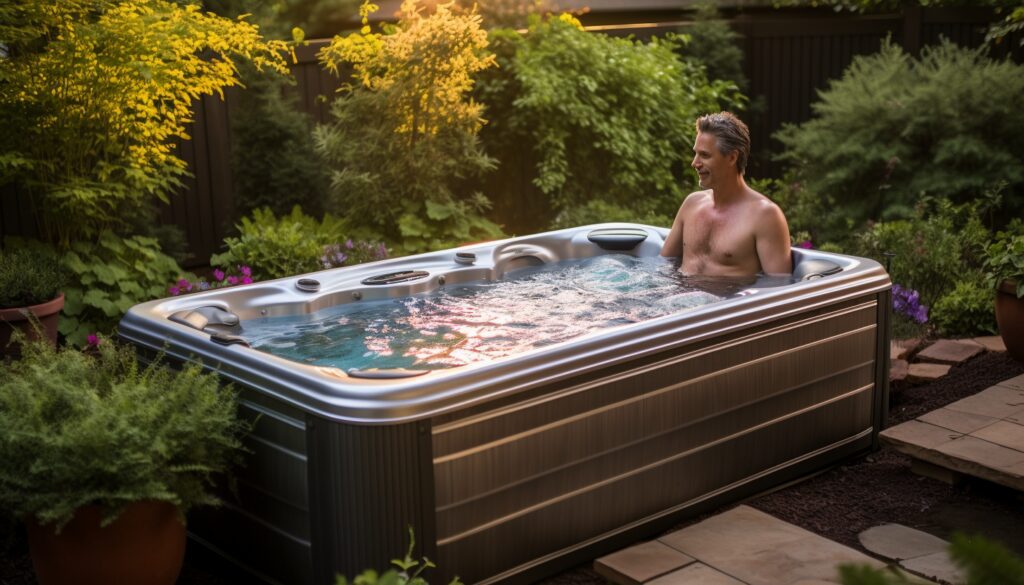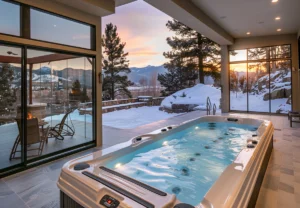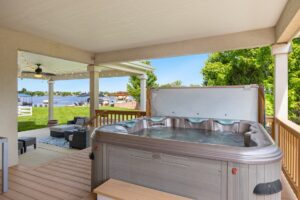Hot tubs have long been a symbol of relaxation and luxury, but they are more than just a lavish amenity. They offer a range of health benefits, from easing muscle pain to improving sleep quality. However, the effectiveness of these benefits is closely tied to the temperature of the water. Too hot or too cold, and you could miss out on the optimal hydrotherapy experience—or worse, putting your health at risk. This article aims to be your comprehensive guide to understanding the ideal hot tub temperature. We’ll delve into safety guidelines, explore the health benefits at different temperatures, and offer practical tips to enhance your hot tub experience.
Why Hot Tub Temperature Matters
The temperature of your hot tub is not just a matter of personal comfort; it plays a pivotal role in the effectiveness of hydrotherapy—the use of water for various health treatments. The right temperature can help dilate blood vessels, improve circulation, and relax muscles, enhancing the therapeutic effects of your soak. Conversely, an incorrect temperature can lead to various health issues. Water that’s too hot can cause overheating, dehydration, or even more severe conditions like heat stroke.
Water that’s too cold may not offer the full benefits of hydrotherapy and could be an uncomfortable experience. Therefore, understanding and setting the right temperature is crucial for both your safety and the effectiveness of the treatment.
The Ideal Temperature Range
The consensus among experts and hot tub manufacturers is that the ideal hot tub temperature ranges between 100°F and 104°F. This range is considered safe for most adults and offers optimal benefits for relaxation and hydrotherapy. However, the “perfect” temperature can vary based on individual preferences and specific health needs. For instance, pregnant women are advised to keep the water temperature around 100°F, while those looking for muscle relaxation might opt for the higher end of the range.
Quick Fact Box: Ideal Hot Tub Temperatures
- General Adult Range: 100°F – 104°F
- Pregnant Women: Around 100°F
- Children: Not exceeding 98°F
- Hydrotherapy: 102°F – 104°F
It’s essential to note that continuously changing the temperature can not only be inconvenient but also increase operational costs. Therefore, it’s advisable to experiment within the safe range to find your ideal temperature and stick to it for consistent benefits.
Safety Guidelines
When it comes to hot tub temperatures, safety should be your top priority. The U.S. Consumer Product Safety Commission (CPSC) has set guidelines recommending a maximum hot tub temperature of 104°F for adults. Exceeding this limit can lead to serious health risks, including heat stroke and cardiovascular issues.
Special populations, such as children and pregnant women, should exercise extra caution. Children’s water temperature should not exceed 98°F, and their time in the hot tub should be limited. Pregnant women are advised to consult their healthcare provider and generally should not exceed a water temperature of 100°F.
Overheating is a risk when using a spa, especially at higher temperatures. Symptoms can include dizziness, nausea, and fainting. To avoid overheating, limit your time in the hot tub to 15-20 minutes and take breaks to cool down. Always stay hydrated and avoid alcohol, which can exacerbate dehydration and the effects of heat.
Seasonal Adjustments
As the seasons change, you may need to adjust your hot tub’s temperature for optimal comfort and energy efficiency. During the summer months, you might prefer a slightly cooler setting, perhaps between 96°F and 98°F, especially if the hot tub is exposed to direct sunlight. In contrast, winter may call for a warmer setting to counteract the chilly outdoor temperatures.
Maintaining a consistent temperature year-round is not only comfortable but also energy-efficient. Modern hot tubs often come with insulated covers and energy-efficient circulation pumps that help maintain a steady temperature while conserving energy.
Health Benefits at Different Temperatures
The temperature of your hot tub can significantly impact the health benefits you experience. For instance, a temperature between 100°F and 102°F is generally considered ideal for relaxation and stress relief. To alleviate muscle and joint pain, temperatures closer to 104°F may provide more therapeutic benefits.
Hydrotherapy
Hydrotherapy involves the use of water for treating various health conditions and improving well-being. At temperatures between 102°F and 104°F, hydrotherapy can be particularly effective for conditions like arthritis, muscle stiffness, and even insomnia. The heat helps dilate blood vessels, improving circulation and allowing better oxygen and nutrient delivery to cells. This can accelerate healing, reduce pain, and improve overall physical function.
Frequently Asked Questions (FAQs)
How long does it take for a hot tub to heat up?
The time it takes for a hot tub to reach your desired temperature can vary based on several factors, including the starting water temperature, the power of your heater, and the ambient temperature. Generally, you can expect it to take anywhere from 4 to 24 hours to heat up fully. If you’re refilling your hot tub, allowing 18 to 24 hours for the water to reach around 100°F is a good rule of thumb.
How can I make my hot tub more energy-efficient?
Energy efficiency is a concern for many hot tub owners. Here are some tips to make your hot tub more energy-efficient:
- Use a Quality Cover: A well-insulated cover can significantly reduce heat loss.
- Maintain Water Temperature: Constantly changing the temperature can consume more energy. Find your ideal temperature and stick to it.
- Regular Maintenance: Keeping your hot tub clean and well-maintained ensures all parts run efficiently, reducing energy costs.
- Off-Peak Heating: If your energy rates vary by time, consider heating your hot tub during off-peak hours.
- Invest in Energy-Efficient Models: Newer models often have energy-saving features like variable-speed pumps and advanced insulation.
Hot Tub Temperature: Final Thoughts
Understanding the ideal hot tub temperature is crucial for maximizing both the therapeutic benefits and your overall enjoyment. From safety guidelines to energy efficiency, this guide has aimed to cover all aspects you must consider. We encourage you to find your ideal temperature within the safe range to ensure a beneficial and enjoyable hot tub experience.






